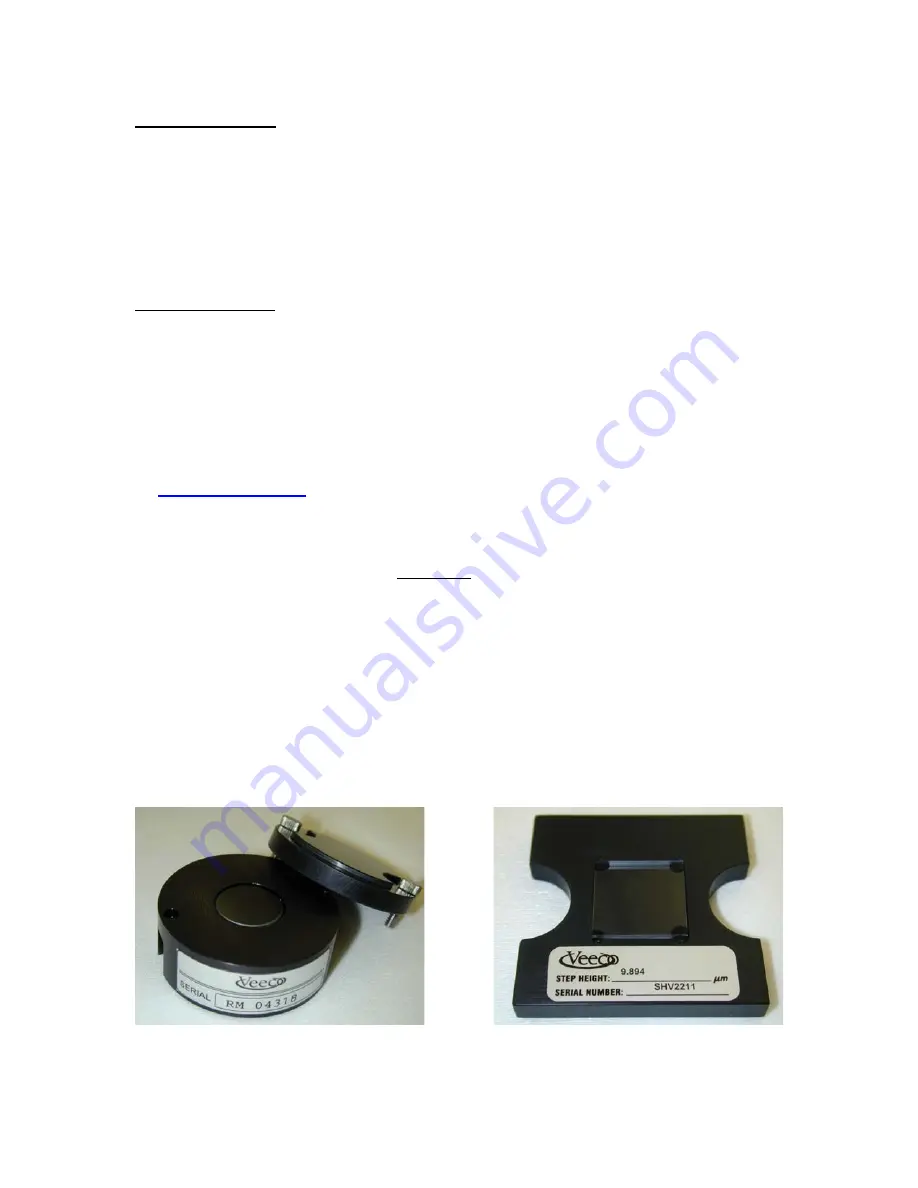
VSI Measurements (160nm < Step height)
Vertical Scanning Interferometry (VSI) uses the interference of light to map the surface
of your sample. VSI is used for relatively rough surfaces (R
a
greater than 0.1 µm) or
surfaces with discontinuities or steps greater than 160 nm (
λ
/4). In VSI mode, the optics
physically scan through the focus of the objective while obtaining “snapshots”, called
frames, from the camera inside the Integrated Optics Assembly (IOA). These frames are
used to reconstruct a map of the surfaces of the sample.
PSI Measurements (Step height < 160nm)
Phase Shifting Interferometry (PSI) uses the interference of light to produce information
on the surface of a sample. PSI is used for extremely smooth samples like mirrors or
optics. In PSI mode, a piezoelectric transducer (PZT) within the IOA head precisely
shifts the interference pattern six times; each shift is captured to produce one frame of
data. These frames are then reconstructed to form a topographical map of the measured
surface.
II. Starting the Wyko:
1. Check the logbook to verify that there are no documented problems with the Wyko.
2.
Make sure to sign the logbook BEFORE every use.
3. If the instrument is already ON, you may only need to turn ON the CRT monitor.
Otherwise, to turn ON the Wyko, gently pull the red emergency-power-down switch
until it pops out, and then press the green lighted Start button. Next, turn on the CPU
located behind the cabinet door and also turn ON the CRT screen.
4. Start the Vision 3.43 software.
5. If the Wyko has just been turned ON, it will need to be recalibrated with the
appropriate calibration standard (Fig. 2).
Fig 2. Calibration Standards
A
B
PSI calibration standard
VSI calibration standard



























